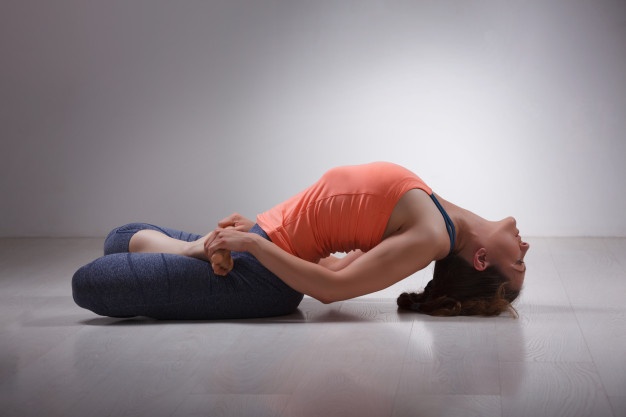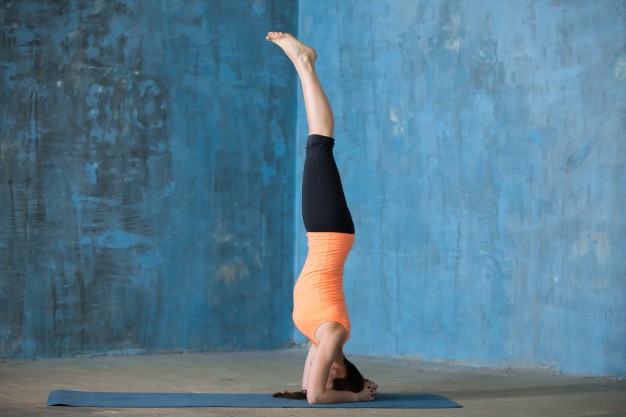“Your illness does not define you. Your strength and courage do”. There’s a cruel truth about life that some people resist accepting, you have no hold over many of the things that happen to you. And when it happens it is definitely not going to be easy it always comes with its ups and downs. When you undergo thyroid disease the most important thing to keep in mind is instead of stressing about it over and over again, find a way to cure it.
It’s important to understand the fact that this disease can occur at any point in your life and has proven to be life-threatening in many cases, so let’s start with understanding what exactly thyroid is? A small organ that’s located in the front of the neck, wrapped around the windpipe is known as the thyroid gland. Since it’s a gland the job is to create and release substance throughout your body to do a specific task. To control many vital functions of the body thyroid makes these hormones. It is called thyroid disease when it either makes too little or too much of these essential hormones. Hyperthyroidism, hypothyroidism, thyroiditis, and Hashimoto’s thyroiditis are the several different kinds of thyroid disease.
Who are the people most likely to be affected by thyroid? Women, men, children, teachers, and the elderly can be affected by this disease. When compared to men, women are most likely to be affected since the thyroid can be present at the time of birth and also develop as you grow older (even after menopause). You’re at higher risk if you have a family history of thyroid disease, have a medical condition such as diabetes, and are older than 60. (especially for women)
There are two types of Thyroid. The first one named Hypothyroidism and the second one knows as hyperthyroidism. Let’s know a little more about both these types and how is it caused:
TYPE 1: HYPOTHYROIDISM
- When the thyroid gland is not able to produce enough of the crucial hormones or if there is a decrease, it is called Hypothyroidism.
- In this condition, women are more affected when compared to men especially in the stage of pregnancy.
- Some of the symptoms included in this condition are slow heart rate, dry skin, weight gain, puffy face, etc.
TYPE 2: HYPERTHYROIDISIM
- When the thyroid gland produces an extra amount of hormones, that means when there is an increase, it is called hyperthyroidism.
- Some of the symptoms included in this condition are weight loss, sweating, skin thinning, irregular heartbeat, etc.
Thyroid hormone affects the strength and speed of your heartbeat, your blood pressure, and cholesterol level as well. Too much or too little of the thyroid hormone can lead to heart problems or may worsen the existing heart disease.
According to Dr. Mark Vanderpump a large study in 2015 which looked at approximately 15,000 people, revealed that those with congestive heart failure were at significantly higher risk of death if they were suffering from hyperthyroidism.
Several doctors have suggested medication like levothyroxine, this oral medication may help in restoring adequate hormone levels. One of the major drawbacks of this medication is if you stop taking this drug the symptoms of hypothyroidism will gradually return.
Therefore, medications do have their own drawbacks as well, although according to my reviews regarding thyroid disease exercise, yoga and a good healthy diet may also prove to be a better option for treating such disease.
Table of Contents
How does yoga help with thyroid disease?
Have you also been undergoing this terrible disease for a long period now? The doctor has been prescribing you several medicines every month. Are you tired of those? Need a better way other than having those boring medicines literally every other day? Here is an amazing and proven to be a helpful solution for you! Why not try yoga? Yes, that’s right. Yoga practice on a regular basis can help you to eliminate the need for medication and also help you fight against this condition. It not only applicable for the thyroid, it considered to be a great deal of help for diabetes as well.
Below we shall discuss 5 yoga poses that might definitely help you to resolve your problems relating to thyroid disease in fact it may also help in preventing this disease to reoccur in the future.
Here are some yoga poses that will be helpful to control your thyroid. Before we go further, I want to ask you, are you a YouTube fan? I mean do you keeping scrolling through videos just for time to pass. Instead, I would suggest you go check out some healthy videos that benefit your health. Our channel named DR.ZIO-YOGA TEACHER provides you with many Yoga poses you can practice at home. YouTube is a free platform and easily available for each one of you. So, why not take full advantage of it. Right?
1.Sarvangasana (Shoulder Stand Pose)

It controls thyroxin and stimulates thyroid glands. It helps in mitigating thyroid because it is an inverted pose, the blood flows from the legs to the head region.
2.Hal asana (Plough Pose)

It stimulates the abdominal and thyroid glands because this pose compresses the neck. It helps to reduce fatigue and reduces stress therefore, calms the mind. It is called Halasana as it resembles the Indian plow.
3.Matsyasana (Fish Pose)

It is called Matsasana as it takes the form of a fish. It stimulates the thyroid glands because it stretches the neck. According to the needs of thyroid patients, it provides them with gentle healing. It helps with reducing the stiffness of muscles, joints and lowers stress levels. Thyroid might cause depression and mood swings, but this pose might help to prevent all this and relax your body.
4.Sirshasana (Headstand Pose)

It helps in managing act directly on the thyroid glands and therefore is one of the finest yoga postures. It brings wakefulness and alertness to the body and aids in balancing metabolic functions.
5.Bhujangasana (Cobra Pose)

It helps in regulating the thyroid glands because during this pose there is a lot of compressing and stretching. This pose helps to reduce stress and fatigue, tones the abdomen, expands the chest, strengthens the entire shoulder and back, and also improves flexibility of the upper and middle back and the blood circulation.
To alleviate your thyroid-related issues, other than yoga a well-structured diet plan might help too. Build a diet plan with the following tips- Consume the right nutrients like iron, iodine, Vitamin A&D, reduce sugar intake and eat good proteins.
I hope this has been helpful to you. If you don’t want to spend money at expensive classes or at the gym and want an easier option to practice yoga at home. From a personal point of view, I have been using this app named Dr.Zio for quite some time now and it has proven to be really helpful for me and would also suggest you go ahead and give it a try. It includes all amazing features. You don’t require a professional guide as this app includes everything you need. So, what are you waiting for? Go check it out and do let me know about your reviews. I have mentioned the link below.

